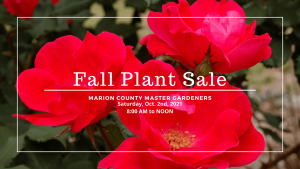Plant Stressors
Plants can help us overcome stress in a variety of ways, but did you realize your plant can exhibit stress symptoms as well. A stressed plant is more susceptible to insect and disease problems. Here are ten ways you may unknowingly stress your plants.
- Environmental Stress AKA Wrong plant Wrong place
Be familiar with the growing conditions that are necessary for your plants to thrive. Sun or shade, acid or alkaline soil, space requirements. Always remember: right plant, right place.
Just like us, plants can get too hot and too cold. For plants, mulching is an effective means to conserve moisture in the soil. It also cools the plant root zone in the summer and insulates them in the winter. Mulch also helps to control weeds. Removing weeds that are growing around desirable plants will also help reduce soil moisture losses.
Environmental stresses are not the same as problems caused by insects or disease, although they may occur in conjunction with insects or disease. If there is an underlying environmental stress or if management practices are not done correctly, it is necessary to correct or manage for those problems to make the site less conducive to the pest. For example, certain weeds such as dollarweed and sedges are often found in overwatered lawns. Controlling the weeds is one step in remediating the problem, but without adjusting irrigation practices, the problem will likely recur. Similarly, lawns that are over fertilized will often be more likely to have disease issues and applying a fungicide may arrest the development of the disease, but if excess fertilization continues, the problem will persist. For more information, see https://edis.ifas.ufl.edu/publication/EP070
- Improper planting
Plants should be placed in the ground at the original level of the container in which they are grown. Planting too deep or too shallow can create problems. Slice about an inch all the way around the root ball of root bound plants to prevent circling of roots before planting in the ground.
The establishment period is the time it takes for a tree or shrub to regenerate enough roots to stay alive without irrigation. During this period, shoots and trunk grow slower than they did before transplanting. When their growth rates become more or less consistent from one year to the next, the plant is considered established. Please see https://edis.ifas.ufl.edu/pdf%5CEP%5CEP31400.pdf
- Trunk damage
Remove support stakes from trees after the tree establishment period, otherwise may grow into the trunk. Avoid damaging trunks with weed trimmers or other equipment. Damage to the bark creates entry points for insects and diseases. Removal of bark can reduce the movement of water and nutrients and lead to decline and eventual death of the plant. Pruning seal is not necessary if pruning is done correctly.
- Soil compaction
Ideal soil for plant growth should be loose to allow movement of air and water. Compaction reduces the amount of space and makes it more difficult for roots to penetrate through the soil. In urban soils, compaction can lead to problems with soil drainage, aeration, nutrient cycling, and plant growth. The arrangement of individual soil particles forms the structure of the soil. The space between particles can be filled with water or air. Soil compaction occurs when the soil structure is compressed, thereby reducing the number and size of the pore spaces between particles. Soil compaction in urban areas is often caused by the use of heavy equipment during construction and constant traffic (foot or equipment) in existing landscapes.
Compaction can be exacerbated when heavy equipment is used during periods where the soil is very wet. See https://edis.ifas.ufl.edu/publication/SS529
- Improper pruning or mowing
Poor pruning practices will stress trees. Mowing to low will scalp your lawn. Do not remove more than one-third of the plant at a time. Selectively prune out dead or crossing branches. Sterilize pruners to prevent spread of disease.
Mow at the recommended height for your grass species. All landscape grasses should be maintained at the highest mowing heights for that species and cultivar. Higher mowing heights produce deeper root systems. Deep roots increase the ability of the grass to survive stresses, including drought stress. Mowing below the recommended height reduces the grass’s ability to photosynthesize and forces the grass to put energy reserves into regrowth.
For recommended mowing heights for your grass species, see https://edis.ifas.ufl.edu/pdf/LH/LH02800.pdf
- Improper fertilization
Excessive or too little fertilizers can stress plants or make them more susceptible to insect or disease problems. Different plants have different nutrient requirements, and in many cases a fertilizer product may not be necessary, so know your plants’ needs and do your homework before you purchase and apply fertilizers. Your landscape plants may need a different fertilizer than your turfgrass. Sometimes, specific plants, like azaleas or palms, need a special formulation of fertilizer.
The label includes a series of numbers that indicate the percentage of nitrogen, phosphorous, and potassium, by weight. For example, a 16-2-8 fertilizer contains 16 percent nitrogen, 2 percent phosphorous, and 8 percent potassium. Be sure to purchase a fertilizer with 2% phosphorus or less in accordance with Florida State Law. The exception to this would be when fertilizing edibles; they may need more phosphorus. A soil test will help you determine that.
The label also lists all of the other nutrients as part of the guaranteed analysis, and information about how to properly apply the product. The fertilizer label specifies if the fertilizer is water soluble or controlled release, indicating if the nutrients will be available immediately to plants or slowly over time. See https://gardeningsolutions.ifas.ufl.edu/care/fertilizer/fertilizer.html
- Soils
Consider having your soil tested to see what’s present and what’s lacking. Additionally, your soil could be altered from construction and building materials or other human activities. Soil pH kits are available at your county Extension office or samples can be sent to the UF/IFAS Soils Lab for a full nutrient analysis which costs $10. If soil pH is too high or too low, the plant cannot uptake nutrients in the soils. Fertilizers contain one or more essential plant nutrients and can be applied to landscapes to improve plant growth and quality or to correct a nutrient deficiency.
- Volcano mulch
Mulching can be very beneficial when done properly at a depth of 2-3”. Turf and weeds rob trees of moisture and nutrients, and some produce chemicals that inhibit tree growth. However, Volcano mulching is the incorrect placement of mulch against the trunk of a tree. As mulch is layered higher and higher against the tree trunk, the trunk appears to be “erupting” from a volcano-shaped pile of mulch. Never pile mulch in a volcano-like manner against the trunk. This cuts off oxygen to roots, can keep vital irrigation and rain water out, can keep roots too wet in poorly drained soils, and can rot the trunk. Some rodents, such as voles, can also cause damage to the trunk easily if mulch is piled there. Trees could decline from this problem.
- Over or under watering
Plants that are overwatered will develop root rot problems. Drought stressed plants can result in roots becoming dehydrated. Consider watering your garden or landscape early in the morning. This method takes advantage of cooler morning temperatures, which can extend soil moisture conditions thus making soil moisture available during the hottest times of the day. Early morning watering will also discourage disease problems on plants susceptible to fungal growth such as lawns, roses, and cucurbits.
- Herbicide use and impacts
The use of herbicides can cause injury to nearby plants in which it comes into contact. Avoid spraying herbicides in high winds. Systemic herbicides can move throughout the plant and accumulate in meristematic tissues. Trees and shrubs planted in the landscape can have roots that extend well into areas covered with turfgrass, with surface roots co-mingling with turf root systems. When herbicide applications are made to bermudagrass, St. Augustine grass, or other types of turfgrass, injury can occur in trees, palms, or shrubs that have roots extending into treated areas. Take caution when applying herbicides and always read the label. See https://edis.ifas.ufl.edu/publication/FR400
Plants are like people, they can become sick when stressed too much. Remember, plants will not live forever, like other living organisms do have an average life span and will eventually die.
 Our Master Gardener volunteer Fall Plant Sale will be held on October 2nd, 2021.
Our Master Gardener volunteer Fall Plant Sale will be held on October 2nd, 2021.
For more information about the plant sale or upcoming classes or to speak with any one of our Master Gardener Volunteers please contact us at 352-671-8400.
 Maxine Hunter is the Horticulture Extension Agent and Master Gardener Coordinator at the UF/IFAS Extension Marion County.
Maxine Hunter is the Horticulture Extension Agent and Master Gardener Coordinator at the UF/IFAS Extension Marion County.
For more information, contact Maxine maxine32666@ufl.edu or contact our office at (352) 671-8400. The Extension Service is located at 2232 NE Jacksonville Rd. Ocala, FL 34470
Note: The use of trademarks is solely for the purpose of providing specific information. It is not a guarantee; warranty or endorsement of the products named and does not signify that they are approved to the exclusion of others. Follow product label information, which take precedence over any other information.
The Institute of Food and Agricultural Sciences (IFAS) is an Equal Opportunity Institution authorized to provide research, educational information and other services only to individuals and institutions that function with non-discrimination with respect to race, creed, color, religion, age, disability, sex, sexual orientation, marital status, national origin, political opinions or affiliations. U.S. Department of Agriculture, Cooperative Extension Service, University of Florida, IFAS, Florida A. & M. University Cooperative Extension Program, and Boards of County Commissioners Cooperating. Tom Obreza, Interim Dean.
 0
0
